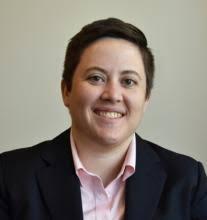
On Jan. 21, Reps. Mark Takano (D-Calif.), chair of the House Veterans’ Affairs Committee; Adam Smith (D-Wash.), chair of the Armed Services Committee; and Jackie Speier (D-Calif.), chair of the subcommittee on military personnel, asked the Department of Defense to “conduct a historical review of service by LGBTQ+ military personnel,” including the effects of policies requiring discharge of these troops.
This came on the heels of the Department of Veterans Affairs announcing in September that it would restore access to benefits to veterans who received other than honorable discharges because of their sexual orientation. These are two critical steps toward addressing discrimination that harmed an estimated 100,000 or more veterans discharged for homosexuality between World War II and the 2011 repeal of the “don’t ask, don’t tell” policy. Fully redressing these wrongs may be impossible. But the study requested by Takano, Smith and Speier is an important step toward addressing their present ramifications and identifying what, if any, action the government can take to ameliorate their harmful legacies.
Gay Americans were technically prohibited from military service during World War II, although many served nonetheless. Psychiatric screening at induction centers included questions about homosexuality, seeking to identify and disqualify gay recruits from the outset. But being disqualified from military service because of homosexuality was highly stigmatizing, with the potential to devastate a recruit’s civilian life, so many did not answer truthfully. Additionally, some inductees answered honestly based on the specific wording of the questions they were asked (for example, some reported being asked whether they “liked girls”), others may not have thought of themselves as gay until after they were already in the service, and occasionally some answered that they had experienced attraction to the same sex but were not actually disqualified, in part because of officials’ concerns that declarations of homosexuality were a means of evading the draft.
Once in the armed forces, however, even suspicion of being gay could be grounds for discharge, and it threatened access to veterans benefits. The key question was how the military categorized a service member’s discharge.
The Servicemen’s Readjustment Act of 1944 — the vaunted GI Bill — promised an array of benefits to veterans, most importantly cheap government-backed home mortgages and tuition for college or vocational school. Theoretically, most veterans were eligible for these benefits; the law itself barred only those who had been dishonorably discharged. However, VA (then a non-Cabinet level agency called the Veterans Administration) interpreted the law so as to bar veterans who had received “blue discharges,” so named because they were printed on blue paper, that were neither honorable nor dishonorable.
Commanders frequently issued “blue discharges” for suspected homosexuality, and they also went disproportionately to Black soldiers. (Legislation introduced in the House and Senate would address the racial inequalities in Black veterans’ abilities to obtain GI Bill benefits.)
Because individual cases could be reconsidered based on their facts, many veterans accused of homosexuality sought help from veterans’ and civil rights organizations to appeal their discharges or obtain upgrades. But they found little success as appeals processes typically determined that the discharges had not violated procedure.
Although the Army stopped issuing blue discharges shortly after World War II, individuals who had received them did not receive automatic upgrades, and VA continued to view these veterans as ineligible for benefits. Furthermore, homosexuality remained a reason to discharge someone for “unfitness” or “unsuitability.”
Read the entire OpEd HERE
